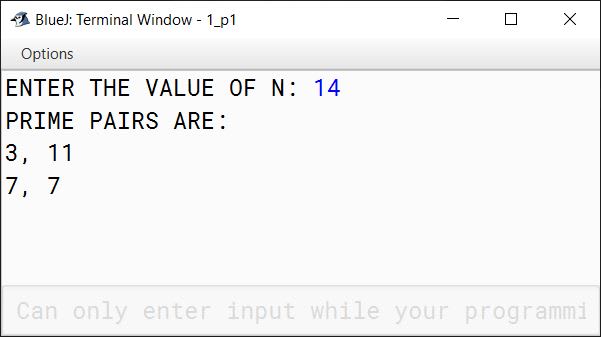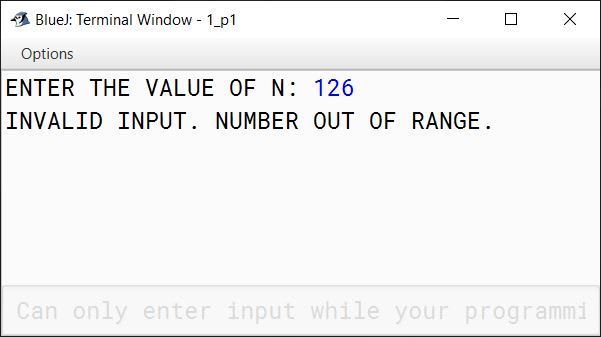Java Number Programs (ISC Classes 11 / 12)
A Goldbach number is a positive even integer that can be expressed as the sum of two odd primes.
Note: All even integer numbers greater than 4 are Goldbach numbers.
Example:
6 = 3 + 3
10 = 3 + 7
10 = 5 + 5
Hence, 6 has one odd prime pair 3 and 3. Similarly, 10 has two odd prime pairs, i.e. 3 and 7, 5 and 5.
Write a program to accept an even integer 'N' where N > 9 and N < 50. Find all the odd prime pairs whose sum is equal to the number 'N'.
Test your program with the following data and some random data:
Example 1
INPUT:
N = 14
OUTPUT:
PRIME PAIRS ARE:
3, 11
7, 7
Example 2
INPUT:
N = 30
OUTPUT:
PRIME PAIRS ARE:
7, 23
11, 19
13, 17
Example 3
INPUT:
N = 17
OUTPUT:
INVALID INPUT. NUMBER IS ODD.
Example 4
INPUT:
N = 126
OUTPUT:
INVALID INPUT. NUMBER OUT OF RANGE.
Java
User Defined Methods
ICSE Prac 2018
72 Likes
Answer
import java.util.Scanner;
public class GoldbachNumber
{
public static boolean isPrime(int num) {
int c = 0;
for (int i = 1; i <= num; i++) {
if (num % i == 0) {
c++;
}
}
return c == 2;
}
public static void main(String args[]) {
Scanner in = new Scanner(System.in);
System.out.print("ENTER THE VALUE OF N: ");
int n = in.nextInt();
if (n <= 9 || n >= 50) {
System.out.println("INVALID INPUT. NUMBER OUT OF RANGE.");
return;
}
if (n % 2 != 0) {
System.out.println("INVALID INPUT. NUMBER IS ODD.");
return;
}
System.out.println("PRIME PAIRS ARE:");
int a = 3;
int b = 0;
while (a <= n / 2) {
b = n - a;
if (isPrime(a) && isPrime(b)) {
System.out.println(a + ", " + b);
}
a += 2;
}
}
}Output




Answered By
25 Likes